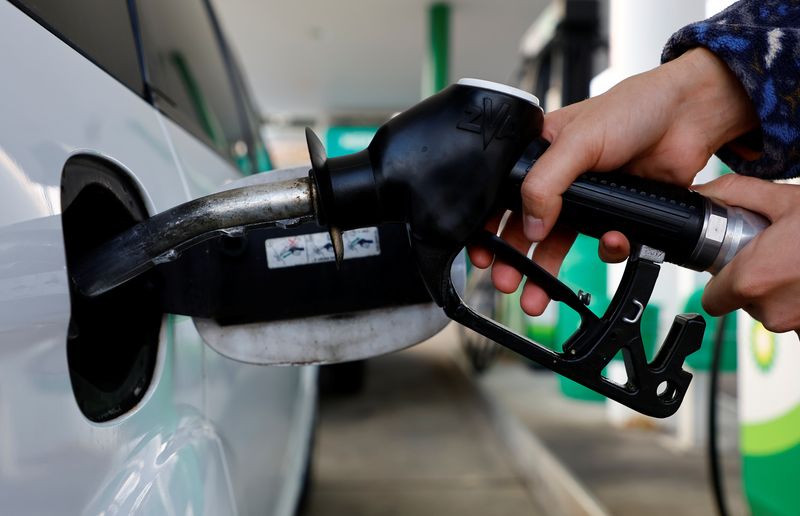
© Reuters. FILE PHOTO: A person uses a fuel nozzle to fuel up a car at a petrol station in Vienna, Austria March 18, 2022. REUTERS/Leonhard Foeger/File Photo
LCO
-0.21%
Add to/Remove from Watchlist
Add to Watchlist
Add Position
Position added successfully to:
Please name your holdings portfolio
Type:
BUY
SELL
Date:
Amount:
Price
Point Value:
Leverage:
1:1
1:10
1:25
1:50
1:100
1:200
1:400
1:500
1:1000
Commission:
Create New Watchlist
Create
Create a new holdings portfolio
Add
Create
+ Add another position
Close
CL
-0.29%
Add to/Remove from Watchlist
Add to Watchlist
Add Position
Position added successfully to:
Please name your holdings portfolio
Type:
BUY
SELL
Date:
Amount:
Price
Point Value:
Leverage:
1:1
1:10
1:25
1:50
1:100
1:200
1:400
1:500
1:1000
Commission:
Create New Watchlist
Create
Create a new holdings portfolio
Add
Create
+ Add another position
Close
By Anjana Anil
(Reuters) – The Middle East conflict is unlikely to move the needle much in oil markets this year with ample global supplies reining prices in around the current $80 a barrel level, a Reuters poll showed on Thursday.
A survey of 40 economists and analysts forecast Brent crude would average $81.13 per barrel in 2024, slightly down from the $81.44 consensus in January. U.S. crude forecasts were cut to $76.54 a barrel, from $77.26 last month.
“Disruption in the Red Sea has less impact because there are alternative routes available,” said John Paisie, president of Stratas Advisors, referring to attacks on shipping by Yemen’s Houthis.
“It is unlikely that the volumes of oils being shipped will be materially impacted, and supply/demand fundamentals will be a more important factor as we move into Q2 and Q3,” he added.
Wall Street bank Goldman Sachs forecast a summer Brent peak of $87 per barrel, noting that the geopolitical risk premium remains modest, with only a $2 per barrel boost to Brent, and crude production remaining unaffected.
“Spare capacity has reached a multi-year high, which will keep overall market sentiment under pressure over the coming months,” said Florian Grunberger, senior analyst at data and analytics firm Kpler.
The largest OPEC producers and some of their allies – a group known as OPEC+ – have the capacity to pump more oil as a consequence of decisions to curb output.
“It is not until larger voluntary cuts get released back into the market during the summer months, once global balances tighten, that we’ll see a potential decline in spare capacity and a change in overall sentiment,” Grunberger said.
OPEC+ in November agreed to voluntary output cuts totalling about 2.2 million bpd for the first quarter. The group is expected to announce a decision in March on whether or not it will extend these cuts to bolster prices.
The International Energy Agency estimates that OPEC’s total spare capacity is 5.1 million barrels per day (bpd), of which 3.2 million bpd is held by Saudi Arabia.
“Production cuts have supported oil prices, but some members appear increasingly eager to increase output,” said William Weatherburn, analyst at Capital Economics.
“OPEC’s own forecasts for oil demand are fairly robust, and this may be used to justify a slight increase in output in second quarter,” he added.
Most analysts expect global oil demand to grow by somewhere between 1 million and 1.5 million bpd in 2024.
Source: Investing.com





























